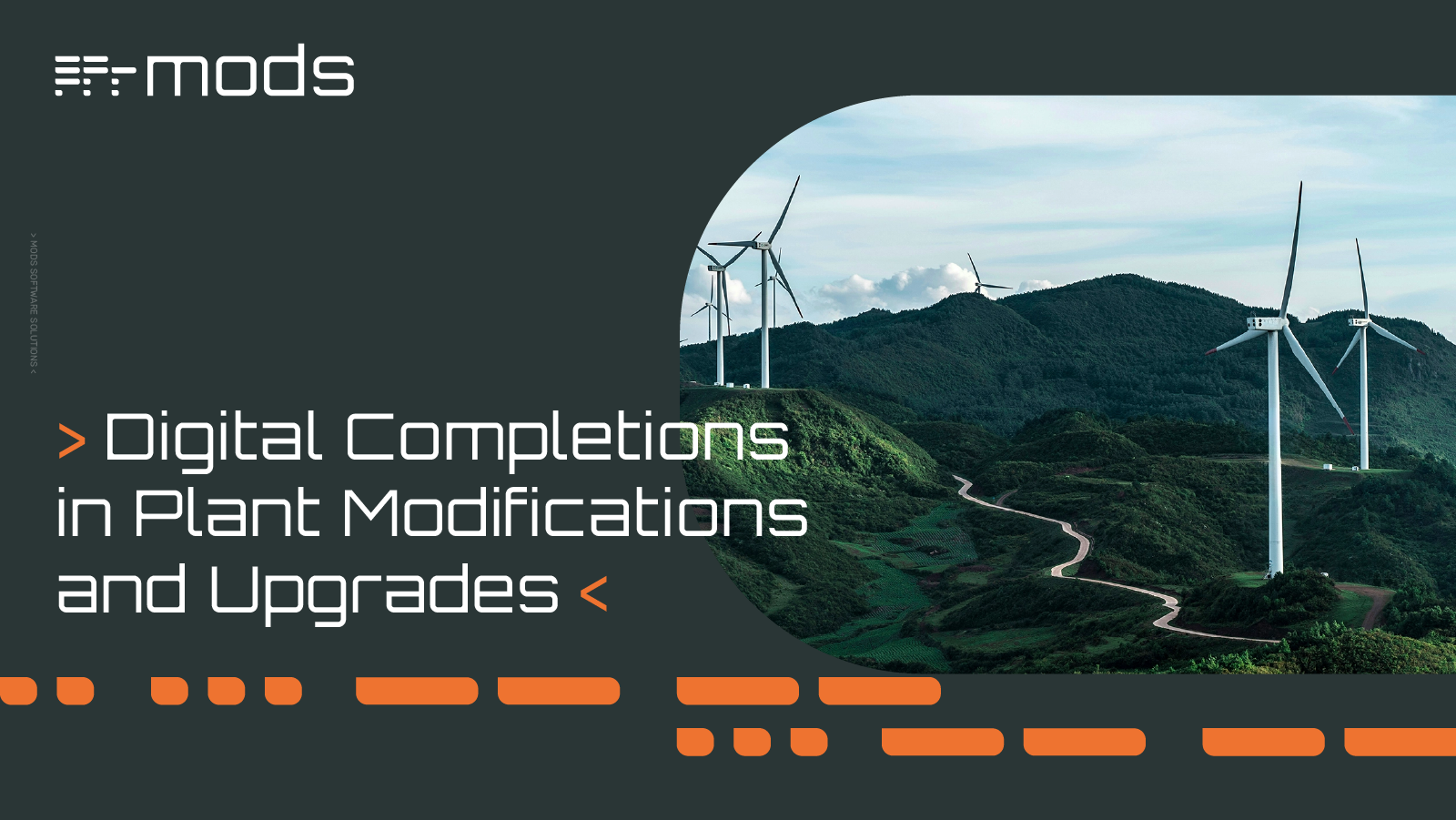Digital Completions in Plant Modifications and Upgrades
Unlike greenfield or any new build construction projects, plant modifications and upgrades present a unique set of challenges. Work is carried out...
3 min read
 Lisa De Vellis, PE
:
Jun 8, 2022 3:08:56 PM
Lisa De Vellis, PE
:
Jun 8, 2022 3:08:56 PM

This blog is the continuation of Data-driven smart facilities and decarbonization towards a sustainable energy future.
Part I explored how data is driving smart facilities of the future, including decarbonization initiatives. The efficacy of technological advances that rely on data in EPC construction and asset-maintenance projects is only as sound as the data itself. Certainly, ensuring data integrity in an industry that is lagging in digital maturity can be a challenge.
Part II, on data-driven DX partnerships and success addresses that challenge. The solution revolves around how the right digital partnership is paramount to data quality assurance and systems readiness.
Digitizing information as the first step in a DX journey is not simply a matter of transcribing analog information into digital format. It must be done so in a way that trends towards interoperability of systems – only then can the full benefits of a DX journey be realized.
Data-driven partnerships are what will enable smart facilities of the future and, hence, a more sustainable energy future, to become the de facto reality.
Essential to the success of any DX strategy, the right digital partnership ensures data integrity and is predicated on trust.
Technologies such as construction digital twins are only as good as the data inputs. When the data is sound, these tools deliver onsite realities to anyone anywhere, facilitating global working relationships. This is possible through digital partners who implement reliable data capture and use. And that’s only the beginning. The right digital partner sees beyond the horizon with a vision towards harnessing the full potential of technological advances now and in the future.
 MODS CEO, Jon Bell, speaks to the benefits of data-driven communication:
MODS CEO, Jon Bell, speaks to the benefits of data-driven communication:
“Thousands of documents, drawings, and plans in paper format make information management and communication vulnerable to error and confusion. The simplicity and efficiency of paperless systems remove these barriers to effective remote communication. This creates positive project outcomes that will keep the energy industry relevant in the context of Industry 4.0.”
Energy-sector DX strategies transform information that would otherwise be in a document into a structured database, ensuring that it’s contextualized, consumable and able to be queried. Data holds power as well as the potential to connect systems and domains, breaking down all manner of information silos. Interoperability of Industry 4.0 requires a strategy achievable only through effective partnerships.
Industry partnerships fuel the implementation of Industry 4.0 data-driven technologies. The future of DX partnerships needs to ensure system-ready data, through standardization, delivers additional value throughout project lifecycles and asset value chains. Entire data ecosystems will evolve through digital partnerships that will help develop, build, maintain and ensure the success of standardized, structured and usable digital technologies such as construction digital twins and robots.
With broader scope and availability of innovative technologies, and more accessible and affordable supporting hardware, the DX Return on Investment (ROI) is increasingly attractive. But for EPC contractors and owner-operators to pull the trigger on DX software, a credible DX roadmap is required. Evaluate the value proposition and look at the DX journey holistically. This is what the best digital partners are primed to do.
Hardware and software technology is what we see of the picture, but it all starts with data. Like a pointillism artwork, when we step back from the perceived chaos of dots, the full picture forms into a cohesive and intricate whole. This is the relationship between data and technological advances.
starts with data. Like a pointillism artwork, when we step back from the perceived chaos of dots, the full picture forms into a cohesive and intricate whole. This is the relationship between data and technological advances.
Digitizing information, ensuring those dots are in the right format, the right syntax and the right system, is the first step and requires the right partner capable of making data system-ready. Internal expertise, particularly with regards to integrating legacy IT and OT systems, is sorely lacking. And this is where an experienced and visionary digital partner steps in.
Mismanaged digitization processes risk losing historical data, inadvertently create new silos, or default to a series of unsustainable quick fixes. The right digital partner helps break down data silos and ensures data trustworthiness and integrity so that it is reliable, accessible and primed for interoperability.
The capture and use of data enables next generation environmental and production efficiencies. Facility design trends towards minimalism, a plug-and-play approach favouring modularity, flexibility and automation.
Prefabricated components for facilities both onshore and onshore, for example, offer adaptability. But these facilities still require construction execution as well as operational and maintenance oversight, which comes from technological advances all powered by data.
Data is driving energy facility future proofing. Though digital partnerships, EPC contractors and owner-operators must embrace interoperable technological solutions, which rely on the power and integrity of data, as part of a comprehensive DX journey. In this way, environmental and operational efficiency will be achieved.
On the surface it may seem paradoxical, but production efficiency and environmental impact need not be mutually exclusive. Data-driven strategies empower emerging sensor, AI (including facility digital twins) and robotics technologies. Poised to have the greatest impact, these technologies futureproof facilities through things like predictive maintenance and automation.
These technological tools, when their foundational data is properly handled, frees up engineers and executives to focus on high-impact issues that meet demands and advance energy development towards net zero.
If you are interested in knowing more about similar topics for the energy industry,  . We are sending a monthly email with the latest blogs. Enjoy!
. We are sending a monthly email with the latest blogs. Enjoy!

Unlike greenfield or any new build construction projects, plant modifications and upgrades present a unique set of challenges. Work is carried out...

Turnarounds and shutdowns are among the most critical—and stressful—phases in the management and operation of industrial assets. These planned...

Offshore decommissioning and asset retirement present significant logistical, regulatory, safety, fiscal and reputational challenges. The process of...

Matthew Smith came to MODS in 2018 as a trainee, straight out of a Mechanical Engineering program in his hometown of Aberdeen where he grew up...

If the COVID-19 pandemic has taught us anything, it’s that businesses must be able to function remotely. Industrial sectors may be more reticent to...
How materials are managed in a project plays a crucial role in the project's cost, integrity, and productivity. Material-related processes, such as...